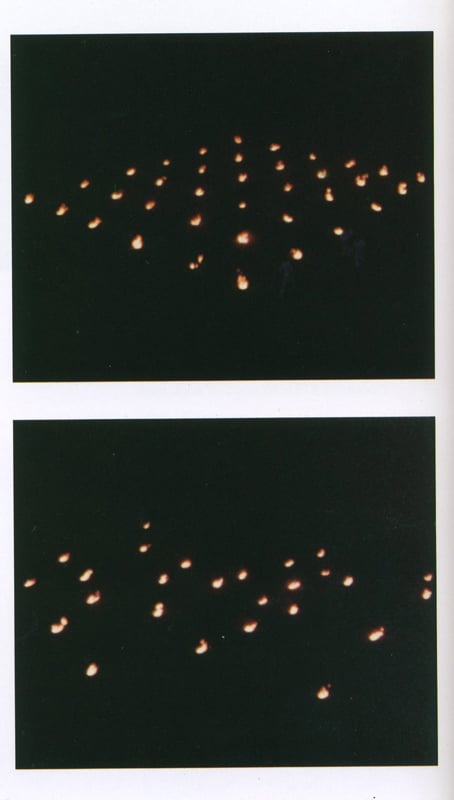
© » KADIST
Sandra Monterroso
Drawing & Print (Drawing & Print)
Presented as part of a recent group of works titled The Paradox of Healing, Rhombus for Healing No. 2 by Sandra Monterroso brings together several of the artist’s interests: the use of ritual and medicinal elements; the conciliation of Western and indigenous formal languages; and more recently, sewing as a recognition and celebration of her maternal lineage. The series as a whole and this painting in particular continue her interest in textiles as visual references and cultural tools to address her native Guatemala’s complex political and cultural histories.
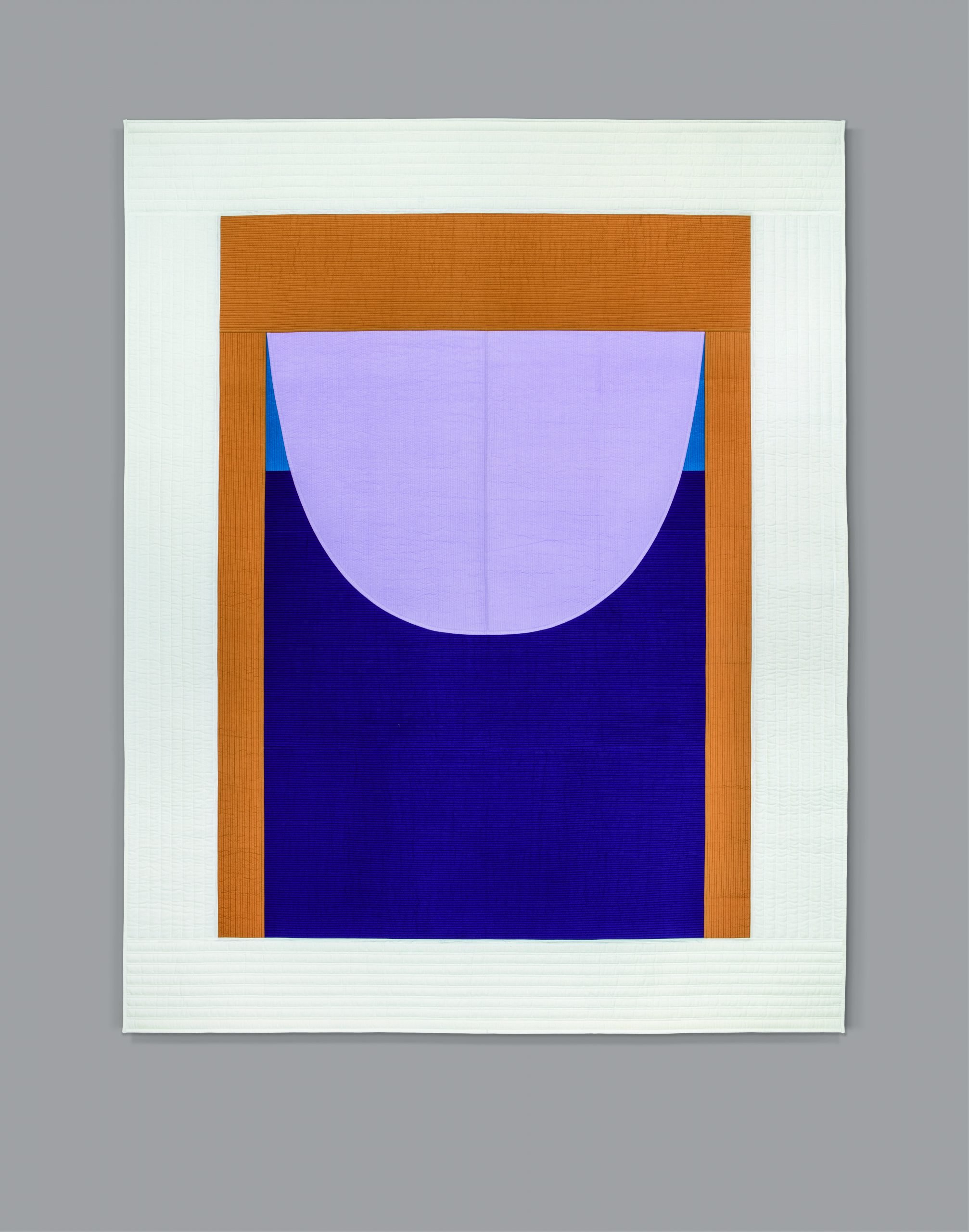
© » KADIST
Seulgi Lee
The Korean title for U: Repair the cowshed after losing the cow = Too late is —a famous Korean proverb meaning “you are doing something when you are already late to do it”. This work by Seulgi Lee is a nubi (traditional Korean quilt) blanket project that shows Korean proverbs expressed as geometric shapes. Nubi blankets were used as single sheet summer blankets in Korean households until the 1980s.
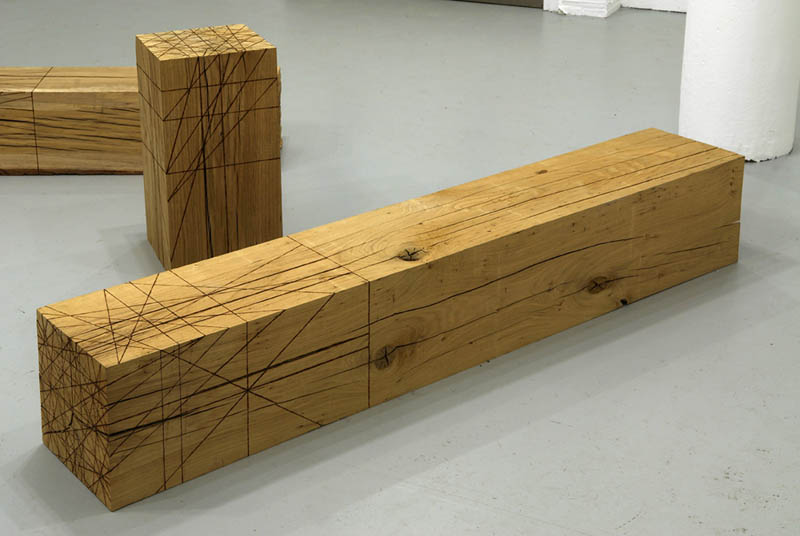
© » KADIST
Raphaël Zarka
Raphaël Zarka discovered the scientific manuscripts of Abraham Sharp while in Oxford. Sharp was an English 18th century astronomer whose treatise Geometry Improved became the subject of a new body of photographs and sculptures. In this document, Sharp draws infinite possible combinations that enable the making of a polyhedron from a wooden cube – the most complex figure allows a perfect form with 120 facets.

© » KADIST
Mike Cloud
In his series Hanging and Beheading Paintings Mike Cloud speaks to the suffering of a series of named (and occasionally unnamed) individuals, addressing their trauma within the language of abstraction. They offer the viewer an aesthetic account of individuality, death, and the empathic space of communion in absence via avant-garde portraiture, unbound by the rules of anatomy or even representation, but instead by purely expressive compositional and aesthetic goals. Untitled (Beheading) embraces the individual subjectivities of notable and mundane contemporaries — from pop stars to serial killers — in cryptic ways, connected only by the physical circumstances of their deaths.
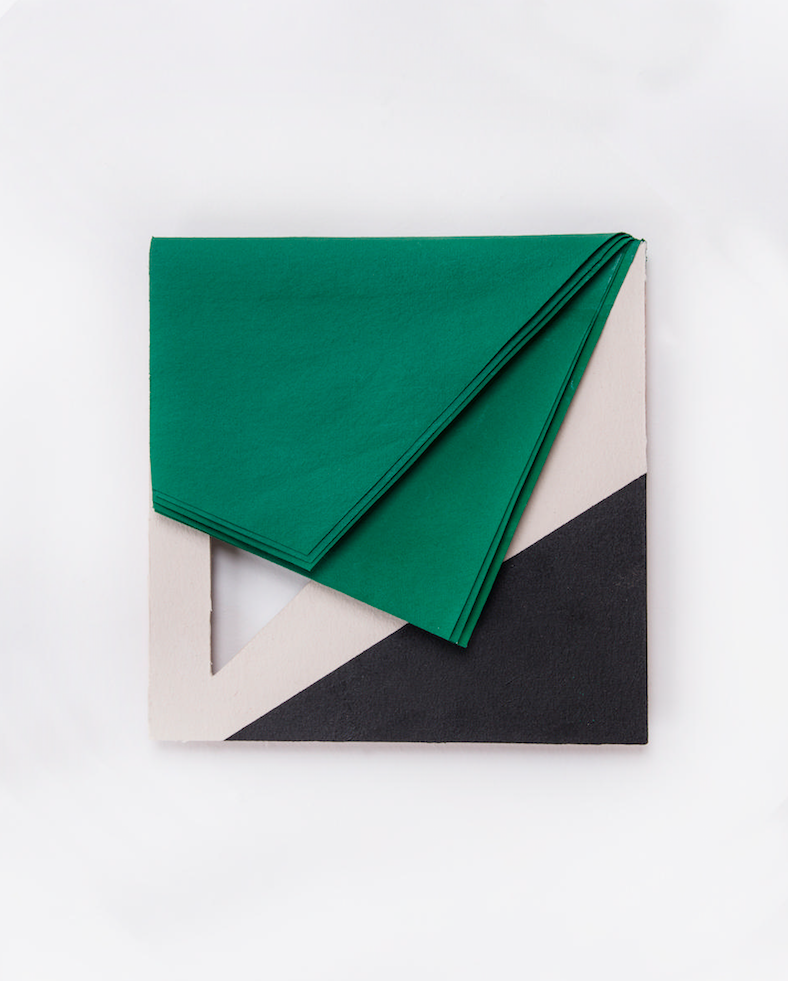
© » KADIST
Luciano Figueiredo
Figueiredo’s succinct forms are rendered in bright hues of yellow, red, green, and blue, with white and black defining positive and negative spaces within the overall geometry. His Revelos are part painting, part relief, and part sculpture—they separate from the wall, creating spatial complexities within their bounds, and imply movement through the simplicity of their shapes. Though based on the shape of a simple square, each Revelo animates beyond that limitation, the folded and layered canvas sheets, the cuts and slices of contrasting paints creating movement from stasis.

© » KADIST
Rodrigo Torres
Drawing & Print (Drawing & Print)
In his Conceito abstrato series, however, Rodrigo Torres turns to the abstract, using the shapes, numbers, lines, and subtle colors of international currencies to create non-representational forms with lavish geometries and baroque curving forms.
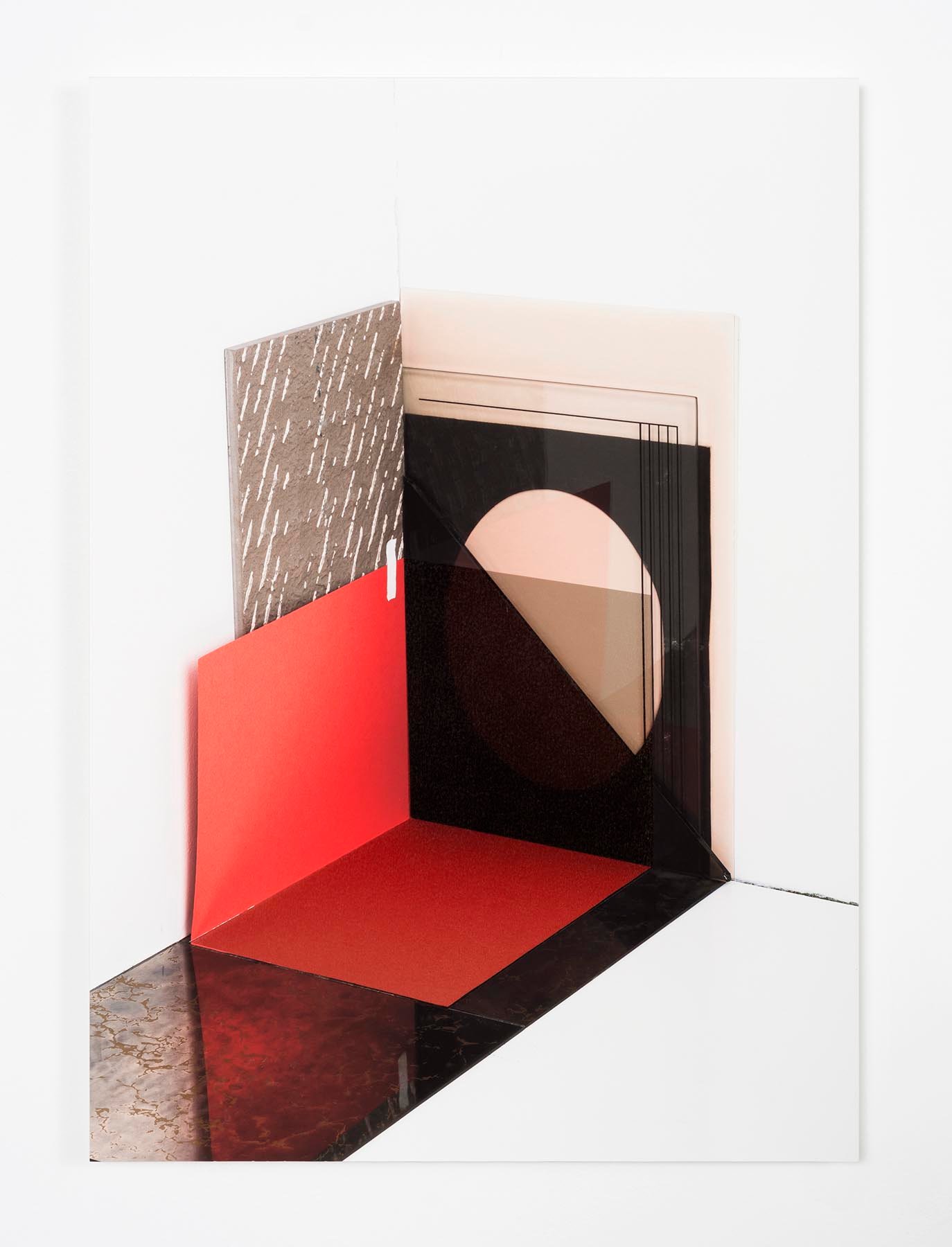
© » KADIST
Phillip Maisel
While his works can function as abstract, they are very much rooted in physicality and the possibilities that are inherent in the materials themselves. Elements used in various stages of photographic processes (color filters, glassine, and prints themselves) are integrated back into the artwork either as part of the sculpture or as collage elements that are later added to the print. In some of the works, Maisel cuts into the prints themselves.

© » KADIST
Renata Lucas
Lucas’s quadroquadro (círculo) employs familiar materials for the artist: wood, paper, and glass. A simple composition—a black circle inscribed on white paper, encased in a rectangular frame—is interrupted in Lucas’s work, the continuous geometry of the nested forms segmented into four broken shards. Pieced back together, these fragments comprise a whole, but it is a unity shattered, unsteadied.
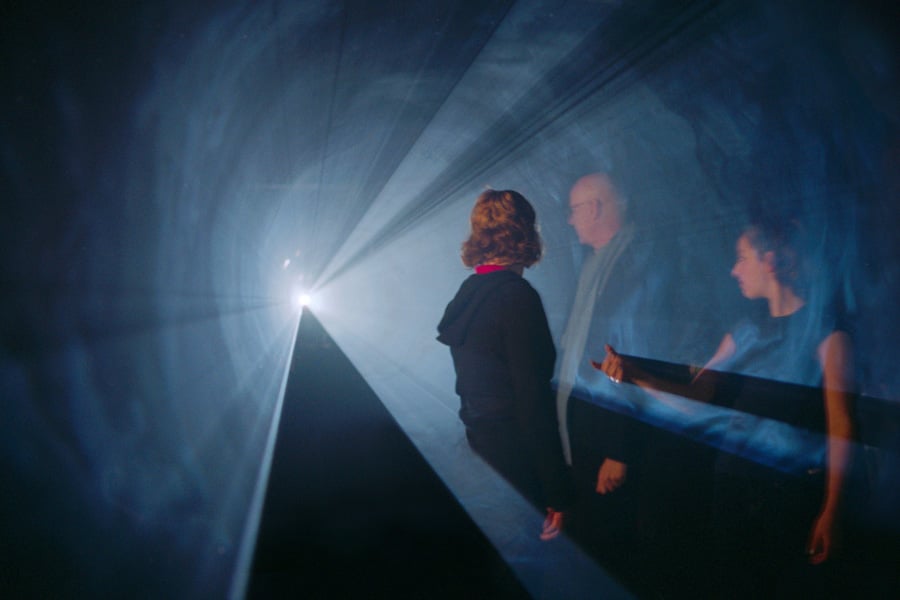
© » KADIST
Anthony McCall
The film Line Describing a Cone was made in 1973 and it was projected for the first time at Fylkingen (Stockholm) on 30 August of the same year. This piece, which was initially screened in independent film contexts, it soon began to be shown at art museums and ended up becoming one of the key works of the artistic movement that opened up the visual arts towards cinema. With a duration of 30 minutes, the film shows the creation of a white curve being projected onto an empty space.
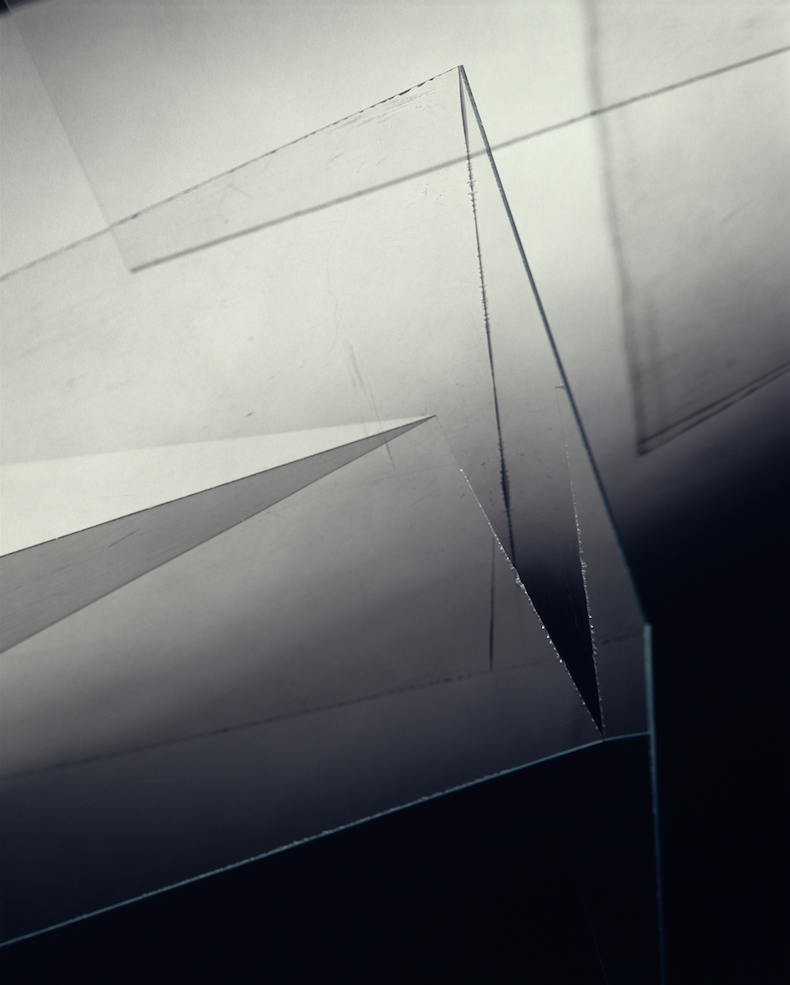
© » KADIST
Barbara Kasten
Barbara Kasten’s Studio Construct 51 depicts an abstract still life: a greyscale photograph of clear translucent panes assembled into geometric forms, the hard lines of their edges converging and bisecting at various points. Light streams from unseen sources and projects rectangular shadows against an adjacent wall. Three-dimensional shapes become suddenly flat as the objects in Kasten’s still life are juxtaposed alongside their ghostly traces.

© » KADIST
Brian Bress
Blindseye Arranger (Max) (2013) features a greyscale arrangement of rudimentary shapes layered atop one another like a dense cluster of wood block prints, the juxtaposition of sharp lines and acute angles creating an abstracted field of rectangular and triangulated forms composed as if in a cubist landscape. As the video progresses, however, a disembodied hand begins to move these forms, animating a pictorial frame that was previously still. The hand – ostensibly the “arranger” of the works title – functions as a metonym of the artist’s hand, quite literally bringing a motionless work to life.
Barbara Kasten
- year born: 1936
- gender: female
- nationality: American
- home town: Chicago, Illinois
Brian Bress
- location: Los Angeles, California
- year born: 1975
- gender: male
- nationality: American
- home town: Norfolk, Virginia
Luciano Figueiredo
Brazilian artist Luciano Figueiredo works with color, form, volume, and light in his exquisite wall-bound compositions...
Seulgi Lee
Seulgi Lee’s artistic references range from anthropological materials, archetypical linguistic elements, vernacular culture, handcrafts tradition, to the graphic culture of animistic belief found in diverse locals around the world...
Phillip Maisel
- location: San Francisco, California
- year born: 1981
- gender: male
- nationality: American
- home town: Chicago, Illinois
Sandra Monterroso
Sandra Monterroso is a Guatemalan artist of Maya Q’eqchi’ decent...
Mike Cloud
Artist Mike Cloud builds irregularly shaped canvases and frames into unique sculptural objects...
Rodrigo Torres
Brazilian artist Rodrigo Torres has been deconstructing international paper currencies to form intricate collages of color, line, shape, and texture for several years...
Renata Lucas
Brazilian artist Renata Lucas is interested in the social, behavioral, and aesthetic implications of special constructions...
Anthony McCall
- location: London, United Kingdom
- year born: 1946
- gender: male
- nationality: British
-
1970-1979
Anthony McCall
1973The film Line Describing a Cone was made in 1973 and it was projected for the first time at Fylkingen (Stockholm) on 30 August of the same year...
-
2000-2009
Raphaël Zarka
2008Raphaël Zarka discovered the scientific manuscripts of Abraham Sharp while in Oxford...
Barbara Kasten
2008Barbara Kasten’s Studio Construct 51 depicts an abstract still life: a greyscale photograph of clear translucent panes assembled into geometric forms, the hard lines of their edges converging and bisecting at various points...
-
2010-2019
Brian Bress
2013Blindseye Arranger (Max) (2013) features a greyscale arrangement of rudimentary shapes layered atop one another like a dense cluster of wood block prints, the juxtaposition of sharp lines and acute angles creating an abstracted field of rectangular and triangulated forms composed as if in a cubist landscape...
Luciano Figueiredo
2015Figueiredo’s succinct forms are rendered in bright hues of yellow, red, green, and blue, with white and black defining positive and negative spaces within the overall geometry...
Phillip Maisel
2015While his works can function as abstract, they are very much rooted in physicality and the possibilities that are inherent in the materials themselves...
Rodrigo Torres
Drawing & Print
2016(Drawing & Print) In his Conceito abstrato series, however, Rodrigo Torres turns to the abstract, using the shapes, numbers, lines, and subtle colors of international currencies to create non-representational forms with lavish geometries and baroque curving forms....
Renata Lucas
2016Lucas’s quadroquadro (círculo) employs familiar materials for the artist: wood, paper, and glass...
Seulgi Lee
2018The Korean title for U: Repair the cowshed after losing the cow = Too late is —a famous Korean proverb meaning “you are doing something when you are already late to do it”...
-
2020-2029
Mike Cloud
2020In his series Hanging and Beheading Paintings Mike Cloud speaks to the suffering of a series of named (and occasionally unnamed) individuals, addressing their trauma within the language of abstraction...
Sandra Monterroso
Drawing & Print
2023(Drawing & Print) Presented as part of a recent group of works titled The Paradox of Healing, Rhombus for Healing No...

